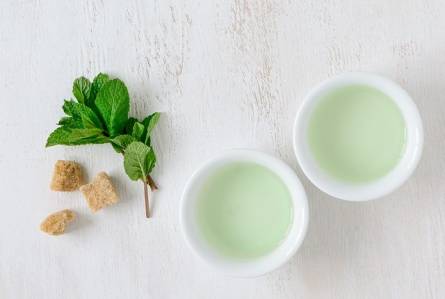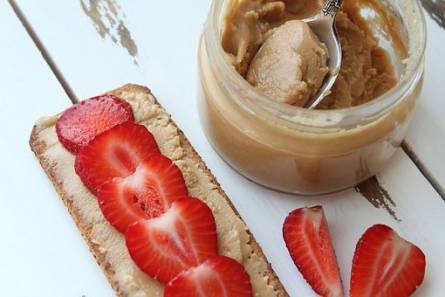Type 2 diabetes is a persistent illness that impacts the body’s capability to regulate sugar levels in the blood. The management of this condition heavily relies on diet. Individuals with type 2 diabetes can effectively control their blood sugar levels and minimize complications by adhering to a suitable dietary plan.
Example of a simple diet for type 2 diabetes
| Meal | Example |
|---|---|
| Breakfast | Spinach and mushroom omelet with whole grain toast and a side of berries |
| Snack | Greek yogurt with mixed nuts |
| Lunch | Grilled chicken salad with mixed greens, cherry tomatoes, and olive oil vinaigrette |
| Snack | Carrot sticks with hummus |
| Dinner | Baked salmon with quinoa and steamed vegetables |
| Evening snack | Apple slices with peanut butter |
Key Guidelines for an Easy-to-Follow Diet
- Choose whole, unprocessed foods: Concentrate on incorporating whole grains, fruits, vegetables, lean proteins, and healthy fats into your diet. Steer clear of processed and sugary foods, as they have the potential to raise blood sugar levels abruptly.
- Monitor carbohydrate intake: The greatest impact on blood sugar levels comes from carbohydrates. It is important to be mindful of how much you consume and opt for complex carbohydrates that have a low glycemic index, such as whole grains, legumes, and non-starchy vegetables.
- Include adequate protein: Include lean sources of protein such as chicken, fish, tofu, and beans in your meals to maintain stable blood sugar levels and feel satiated.
- Control portion sizes: Monitoring portion sizes can help manage blood sugar levels and prevent overeating. Use smaller plates and measure your food to ensure proper portion control.
- Stay hydrated: To maintain stable blood sugar levels and avoid dehydration, it is advised to consume an ample amount of water throughout the day.
Healthy Carbohydrate Choices
Selecting the appropriate carbohydrates is crucial for effectively managing type 2 diabetes. A helpful strategy involves incorporating low-glycemic index foods and upping fiber consumption, which aids in regulating blood sugar levels. The initial stage of establishing a diet plan for diabetes management involves determining which foods have a low glycemic index.
These foods have a smaller impact on blood sugar levels compared to high-glycemic index options. Incorporating whole grains, legumes, and non-starchy vegetables into meals can provide a steady release of glucose, preventing spikes and crashes.
Moreover, incorporating foods that are rich in fiber into one’s diet can assist in managing blood sugar levels. Choices that are high in fiber, such as whole grains, fruits, and vegetables, can slow down the process of carbohydrate absorption and foster a sense of satiety.
Portion Control and Balanced Meals
Creating Well-Balanced Plates
When it comes to managing type 2 diabetes, creating well-balanced meals is crucial. A balanced plate consists of three main components: carbohydrates, lean protein, and healthy fats. For optimal blood sugar control, it’s important to choose the right carbohydrates, focusing on low-glycemic index options such as whole grains, legumes, and non-starchy vegetables. These foods provide a steady release of glucose, preventing spikes and crashes in blood sugar levels.
In addition to carbohydrates, including lean protein sources such as chicken, turkey, fish, and tofu can help keep you feeling full and satisfied. Incorporating healthy fats like avocados, nuts, and olive oil can provide essential nutrients and promote overall heart health.
Tips for Portion Control
Maintaining proper portion sizes is key in managing type 2 diabetes. Here are some tips to help with portion control:
- Use smaller plates and bowls to trick your mind into thinking you have more food.
- Measure and weigh your food to ensure you are consuming appropriate portions.
- Fill half of your plate with non-starchy vegetables.
- Limit high-calorie condiments and dressings, opting for healthier alternatives.
- Eat slowly and savor each bite, allowing your body to recognize when it’s full.
Smart Snacking
When it comes to managing type 2 diabetes, incorporating healthy and well-balanced snacks into your diet is essential. These snacks can help keep your blood sugar levels stable and prevent unnecessary spikes. Here, we will explore some snack ideas for managing blood sugar and also discuss how to avoid common snacking pitfalls.
Snack Ideas for Managing Blood Sugar
- Fruit and Nut Mix: Choose a mix of low-glycemic index fruits like berries or apples and pair them with a handful of nuts. This combination provides a balance of fiber, carbohydrates, and healthy fats.
- Vegetable Sticks with Hummus: Cut up fresh vegetables like carrots, bell peppers, and cucumber and enjoy them with a side of hummus for added protein and fiber.
- Plain Greek Yogurt with Berries: Opt for plain Greek yogurt and top it with a handful of berries. Greek yogurt is high in protein and lower in carbohydrates compared to regular yogurt.
Avoiding Common Snacking Pitfalls
- Avoid Sugary and Processed Snacks: Skip snacks that are high in added sugars and unhealthy fats. These can lead to blood sugar spikes and disrupt your overall balance.
- Mind your Portion Sizes: Measure your snacks to ensure you are consuming appropriate portions. This will help you better manage your blood sugar levels.
- Plan ahead: Pack your snacks in advance so that you are prepared when hunger strikes. This will prevent you from reaching for unhealthy options on-the-go.
By following these smart snacking tips, you can maintain better control over your blood sugar levels and support your overall health.
Incorporating Lean Proteins
To effectively manage type 2 diabetes through diet, incorporating lean proteins is crucial. These proteins not only help control blood sugar levels but also provide essential nutrients for overall health. Here, we will explore the best sources of lean proteins for type 2 diabetes and discuss the benefits they offer in blood sugar management.
Best Sources of Lean Proteins for Type 2 Diabetes
Include the following sources of lean proteins in your diet to support blood sugar management:
- Fish: Fatty fish like salmon, mackerel, and sardines are rich in omega-3 fatty acids, which have been shown to improve insulin sensitivity and reduce inflammation.
- Skinless Poultry: Opt for skinless chicken or turkey breast, as they are low in saturated fats and high in protein.
- Legumes: Beans, lentils, and chickpeas are excellent sources of vegetarian or vegan protein options. They also provide fiber, which aids in blood sugar control.
- Greek Yogurt: Low-fat or non-fat Greek yogurt is high in protein and lower in carbohydrates compared to regular yogurt, making it a suitable option for diabetes management.
Benefits of Protein in Blood Sugar Management
Including lean proteins in your diet offers several benefits for blood sugar management:
- Stabilize Blood Sugar Levels: Protein-rich foods have a minimal impact on blood sugar levels compared to carbohydrates, helping to prevent spikes and maintain stability.
- Increased Satiety: Proteins take longer to digest, keeping you feeling full and satisfied for longer periods. This can prevent overeating and aid in weight management, which is crucial for managing type 2 diabetes.
- Muscle Maintenance: Consuming adequate protein supports muscle maintenance, which is essential for overall health and physical activity.
Remember to consult a healthcare professional or a registered dietitian specialized in diabetes management for personalized dietary guidance tailored to your specific needs and requirements.
Healthy Fats and Oils
The Importance of Choosing the Right Fats
When managing type 2 diabetes, it’s crucial to prioritize healthy fats and oils in your diet. Unlike unhealthy fats, such as saturated fats and trans fats, healthy fats provide essential nutrients and have numerous benefits for overall health. They can help improve insulin sensitivity, lower inflammation, and support cardiovascular health.
Incorporating Healthy Fats into Your Diet
Including the following sources of healthy fats in your diet can be beneficial for managing type 2 diabetes:
- Avocados: Avocados are packed with monounsaturated fats, which can help improve blood sugar control and promote heart health. Include them in salads, sandwiches, or as a spread on whole grain toast.
- Olive Oil: Extra virgin olive oil is rich in monounsaturated fats and antioxidants. Use it for cooking, dressings, or sautéing vegetables.
- Nuts and Seeds: Almonds, walnuts, chia seeds, and flaxseeds are excellent sources of healthy fats. Snack on a handful of nuts or sprinkle seeds on salads or yogurt.
- Fatty Fish: Salmon, mackerel, and trout are rich in omega-3 fatty acids, which have anti-inflammatory properties. Aim to include these fish in your diet at least twice a week.
Managing Sugar Intake
When it comes to managing type 2 diabetes, one of the key aspects of a healthy diet is managing sugar intake. Understanding how to navigate added sugars and hidden sources, as well as knowing about alternative sweeteners, can make a significant difference in blood sugar control. Here, we will explore these important topics to help you make informed choices.
Navigating Added Sugars and Hidden Sources
Added sugars can be found in many unexpected foods, such as processed snacks, sugary drinks, and even condiments. Reading food labels and being aware of the different names for sugar, such as high fructose corn syrup, dextrose, or sucrose, can help you identify hidden sources. Opting for whole, unprocessed foods and preparing meals at home can also help you avoid unnecessary added sugars.
Alternative Sweeteners for People with Diabetes
For those with diabetes, alternative sweeteners can be a great option to satisfy a sweet tooth without causing a spike in blood sugar. Stevia, erythritol, and monk fruit extract are some examples of natural sweeteners that have minimal impact on blood sugar levels. As always, it’s important to consume these sweeteners in moderation and consult with a healthcare professional or registered dietitian for personalized guidance.
By managing your sugar intake and being mindful of hidden sources, as well as exploring alternative sweeteners, you can create a balanced and enjoyable diet that supports your overall health and diabetes management goals.
Meal Planning and Prep
Creating a Diabetes-Friendly Meal Plan
When it comes to managing type 2 diabetes, creating a diabetes-friendly meal plan is crucial. A balanced and nutritious diet can help control blood sugar levels and maintain overall health. Here are some tips to help you create a diabetes-friendly meal plan:
- Portion Control: Opt for smaller, balanced meals throughout the day, rather than three large ones. This can help regulate blood sugar levels and prevent spikes.
- Choose Whole Foods: Include a variety of whole foods in your meals, such as fruits, vegetables, whole grains, lean proteins, and healthy fats. These foods are nutrient-dense and provide steady energy to the body.
- Limit Added Sugars: Be mindful of hidden sources of added sugars and avoid sugary drinks, processed snacks, and desserts. Instead, opt for natural sweeteners or enjoy fruit as a healthier alternative.
Tips for Efficient Meal Preparation
Efficient meal preparation can make sticking to a diabetes-friendly diet easier. Here are some tips to streamline your meal prep:
- Plan Ahead: Set aside some time each week to plan your meals and create a grocery list. This will help you stay organized and ensure you have all the necessary ingredients on hand.
- Batch Cooking: Prepare larger portions of meals and divide them into individual servings. This way, you can easily grab a pre-prepared meal when you’re short on time.
- Prep Ingredients in Advance: Wash, chop, and portion out your ingredients ahead of time. This can save you time during the week and make meal assembly quick and effortless.
By following a diabetes-friendly meal plan and implementing efficient meal preparation strategies, you can maintain stable blood sugar levels and make healthy eating easier and more convenient.
Staying Hydrated
The Importance of Hydration in Diabetes Management
Staying hydrated is crucial for individuals with type 2 diabetes as it plays a significant role in managing blood sugar levels. When you are properly hydrated, it helps your body maintain healthy blood sugar levels and supports overall well-being.
Adequate hydration also aids in digestion, circulation, and preventing dehydration-related complications. It is recommended for individuals with diabetes to consume at least 8 cups (64 ounces) of water per day, but individual needs may vary. Remember to consult with a healthcare professional for personalized hydration recommendations based on your specific condition and activity level.
Making hydration a priority will contribute to your overall diabetes management plan and help you achieve optimal health.
Healthy Beverage Options for Blood Sugar Control
Choosing the right beverages is equally important in managing blood sugar levels. Opting for beverages that are low in sugar and carbohydrates can help prevent spikes in blood sugar. Some healthy options include water, unsweetened tea, and infused water with fresh fruits or herbs for added flavor.
Sparkling water or sugar-free sodas can be refreshing alternatives as well. It is important to avoid sugary drinks such as regular soda, fruit juices, and sweetened beverages, as they can quickly elevate blood sugar levels. By making conscious choices and staying properly hydrated with diabetes-friendly beverages, you can effectively support your blood sugar control efforts and overall health.
Conclusion
Having a sustainable and healthy diet is crucial for individuals with type 2 diabetes. It is important to make mindful choices that support blood sugar control and overall well-being. Here are some key points to consider when building a diet for type 2 diabetes.
Building a Sustainable Diet for Type 2 Diabetes
- Balance: Aim to have a balanced diet that includes a variety of nutrient-rich foods such as whole grains, lean proteins, fruits, vegetables, and healthy fats. This can help regulate blood sugar levels and provide essential nutrients.
- Portion Control: Pay attention to portion sizes to avoid overeating. This can help manage carbohydrate intake and prevent spikes in blood sugar levels.
- Limit Sugary Foods: Minimize the consumption of sugary foods and beverages as they can quickly raise blood sugar levels. Opt for natural alternatives like stevia or small amounts of honey for sweetness.
- Drink Water: Stay hydrated by consuming an adequate amount of water daily. It can support digestion, circulation, and overall hydration.
- Consult a Healthcare Professional: Seek guidance from a healthcare professional or registered dietitian for personalized diet recommendations based on your specific condition and dietary needs.
By following these simple guidelines, individuals with type 2 diabetes can create a sustainable diet that supports blood sugar control and overall health.









